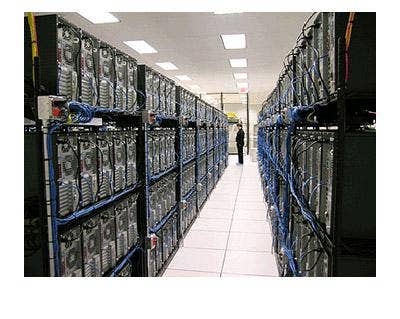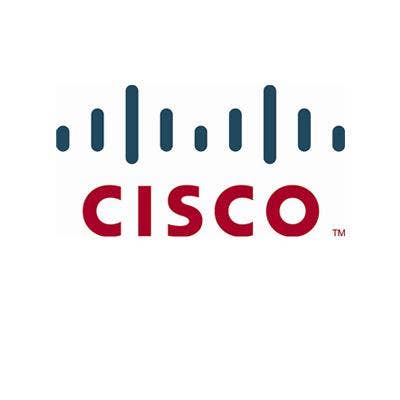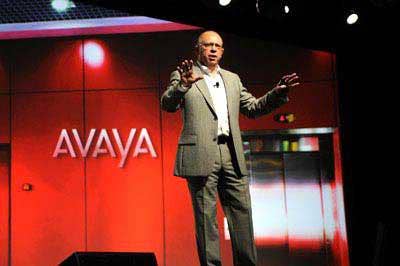The 10 Biggest Networking Stories Of 2009

The Year In Networking
It was a wild and woolly year in the networking space, which itself is getting harder and harder to define. Do we mean infrastructure? Telephony? Voice? Data center? The answer is all of the above, really, and many of the big stories that shaped the year in networking in effect ensured that the definition keeps changing.

1. HP vs. Cisco: It's On
While it's not easy to say which vendor filed the first shot or lit the first fuse, 2009 will be remembered as the year a peaceful co-existence between HP and Cisco became a thing of the past. HP versus Cisco is one of the hottest rivalries in IT these days, and one that has the greatest implications for the channel, as some solution providers who carry both vendors are being asked -- sometimes none too subtly -- to choose sides.
ramped-up competition has been a seesaw battle
continued to add vendor partners
software
data center HP's new BladeSystems Cisco's Borderless Networks architecture

2. HP Grabs 3Com
3Com, once one of the proudest of all networking vendors, seemed to have lost its way in recent years, especially in the channel. Last year was especially rough on 3Com, as it saw the exit of channel chief Nick Tidd and CEO Edgar Masri and the bust of a planned merger with investment firm Bain Capital partners. Both events further soured solution providers on a vendor that had already lost favor in the channel, but that was before May 2009, when the company brought its H3C line from China to other parts of the world and began the delicate process of revamping its channel program. Despite the "taint," many solution providers were starting to give 3Com another look.
Partners are still wondering how 3Com's portfolio will most help HP
in a recent Channelweb.com interview

3. Mission: Data Center
If 2008 was the year that networking vendors started jamming their hands in the data center cookie jar, 2009 was the year where the convergence of networking and the data center was finally ready for its close-up -- and could no longer be ignored.
vendor coalition with EMC and VMware recently debuted HP Converged Infrastructure Architecture

4. Cisco's Got A Server Now -- And More
That Cisco's been deliberately slow in rolling out its Unified Computing System (UCS) to the channel doesn't lessen the impact of its announcement, which in March saw Cisco jumping with both feet into blade servers, rackmount servers and virtualization. CEO John Chambers described the UCS as "industry-changing" at the time of its announcement, and as we've heard all year from partners, that's probably true.

5. Avaya-Nortel: Worlds Colliding
The year began with the fall of a once-mighty networking titan: Nortel Networks filed for bankruptcy. As the sell-off of Nortel's various pieces continued through out the year, there was none more significant for the channel than Avaya emerging as the winning bidder for Nortel's enterprise unit in September for $915 million.
2010 Avaya Americas Partner Conference in Nashville told Channelweb.com again and again that they were both excited by the possibilities and fearing the repercussions

6. Video Market Consolidates
In the span of about six weeks, the landscape for standalone video conferencing vendors was not only consolidated -- it was practically collapsed.
, and Cisco not-so-subtly suggested the offer was final, Cisco did an about-face and actually upped its offer by about $300 million on Nov. 16 in preparation for a Dec. 1 decision from Tandberg's shareholders.Never a company to enjoy getting called-out in public, the move is a sign Cisco wants to dominate video at all costs. And why shouldn't it, if the titan is so keen on collaboration being a huge business -- and channel -- driver in 2010?At the time the acquisition was announced, video alternatives like Polycom and LifeSize described how the deal redrew the battle lines on video. LifeSize executives were especially vocal in positioning themselves as an alternative, but that was a month before LifeSize itself was acquired by Logitech .Although plenty of upstart video point players like Vidyo probably have something to say about it, the consolidation effectively leaves Polycom as the last of the standalone video players with the scale to contend. Polycom seems to like that position , and says it'll only help it grow its channel and vendor partnerships. We'll have to wait until next year to see whether it's right.At left: Tandberg's Executive Telepresence T3
7. Google The Phone Company
If Google's communications strategy was slowly taking shape in recent years, this year their was an eruption from Mountain View: a slew of new products, capabilities and stated intentions that position Google as a disruptive player in voice, telephony and mobility. (Google as a disruptive player in a particular market segment? Stop us if you've heard that one before.)
Chief among Google's advances for its communications platform are Google Android, the mobile OS currently seen on some of the season's hottest smartphones, and Google Voice, an application that consolidates all of a user's voice and SMS contacts into a single point. Rest assured that from Google, this is only the beginning, especially since potential rivals like consumer VoIP specialists Skype have already made their business and enterprise intentions known, too .
8. Net Neutrality Heats Up
Rarely before has the idea of a "free and open Internet" -- to use FCC Chairman Julius Genachowski's description -- set off such a political firestorm as the current Capitol Hill battle over net neutrality.
The so-called net neutrality laws, which may come to define Genachowski's tenure at the FCC, restrict how broadband Internet providers manage their networks. The FCC describes the most recent version of its restrictions as offering "reasonable network management," but providers like AT&T and Verizon have expressed continued concerns about those restrictions. The FCC is currently accepting public comments on its draft rules through January 14, 2010, but with all the hubbub in 2009 over mobile platforms, wireless access security issues, illegal downloading and other similar stories, expect this story to continue well into the new year.
9. Juniper, Brocade Get Tough
While larger networking and data center tyrannosauruses got busy ramping up their rivalry, two of the segment's alternative vendors attempted to prove they weren't going to sit on the sidelines. Juniper, for one, used its J-Partner Summit in April to remind partners that Juniper was creating a true "challenger brand."
It was the first major partner call-to-arms from CEO Kevin Johnson, who joined Juniper in September 2008 and immediately began charting a course -- one that seeks to maximize Juniper's channel presence and its SRX Series Services Gateways and EX Ethernet Switches. Johnson also has an old-school channel veteran in Frank Vitagliano (pictured) to lean on as Juniper's channel ramp-up continues.
This fall, Juniper continued its advance , and timed upgrades to its Junos software platform, chipsets, routers and mobile infrastructure portfolio alongside OEM partnerships with the likes of Dell and IBM and its move from being traded on the Nasdaq to the New York Stock Exchange. Johnson has also stated that Juniper will focus on research and development instead of M&A -- either a boldly defiant or not-with-the-times course of action, depending on who you ask.For its part, Brocade has doubled down on networking ever since its $2.6 billion acquisition of Foundry in 2008, and this year continued to push the envelope. Between OEM relationships with Motorola , a broadened channel program, a greater push into storage networking and a game-changing partnership with Dell , the only more interesting question for Brocade is: who's going to buy them?
10. 802.11n Ratified -- Finally!
In September, the Institute of Electrical and Electronics Engineers (IEEE) finally did what it had been promising to do since at least 2002: ratify the proposed 802.11n wireless standard. While it's true that most wireless vendors had been offering "draft-certified" 802.11n products -- i.e. the guidance ratified in draft form in 2007 -- what you heard on Sept. 10 was a big sigh of relief from those vendors that the "draft n" standard wouldn't be any different than the finalized standard.
Naturally, the ratified 802.11n standard has prompted every vendor with skin in the wireless game to tout new or existing 11n wireless products. As Channelweb.com saw when we took a spin around the wireless landscape soon after 11n was ratified, there's certainly no shortage of those.